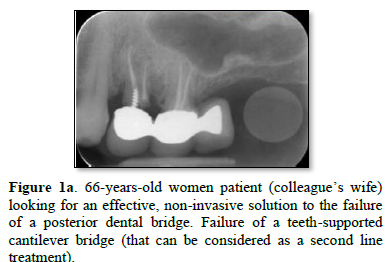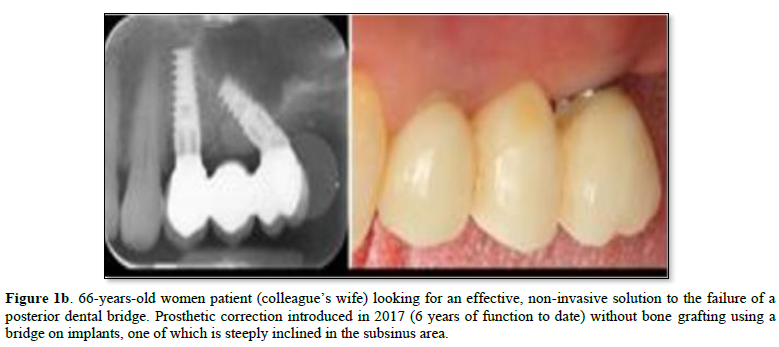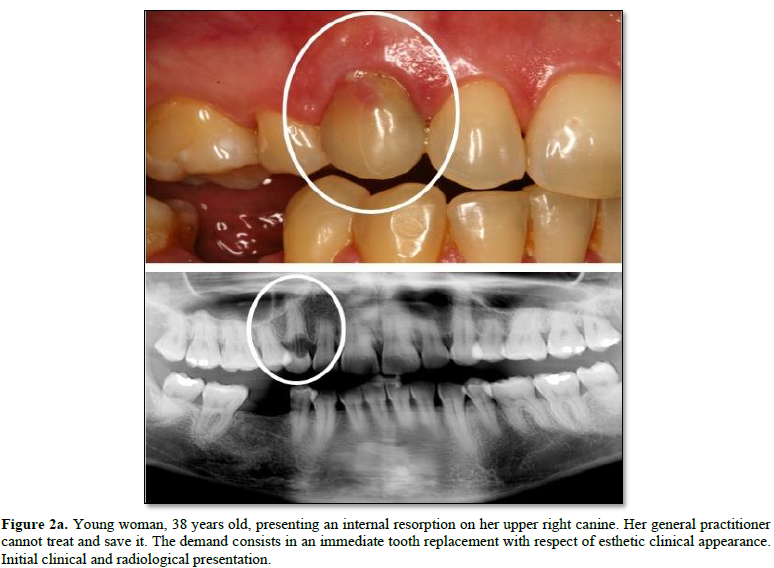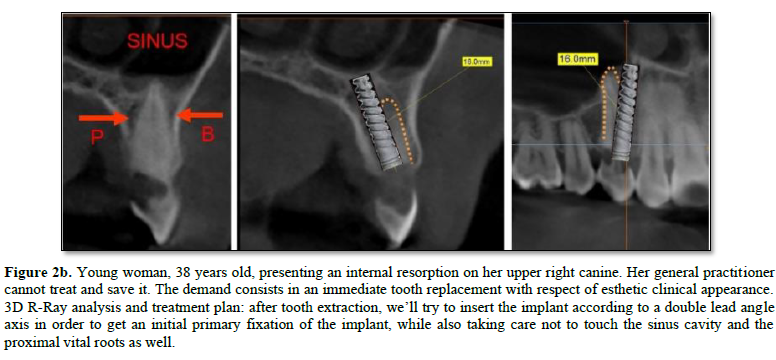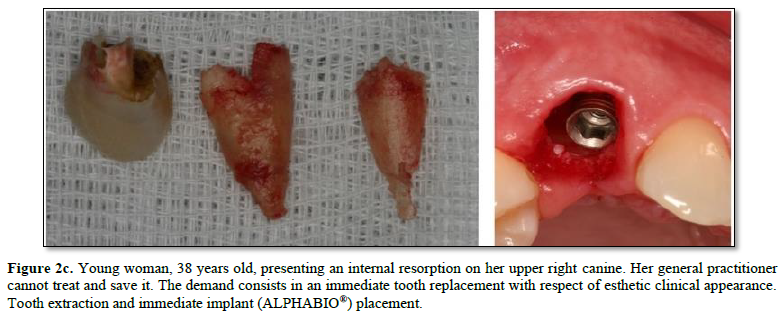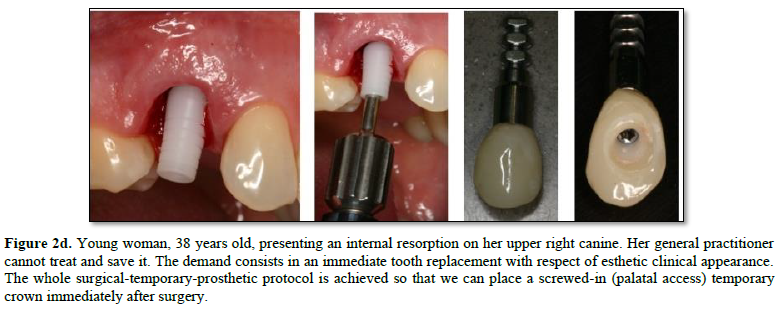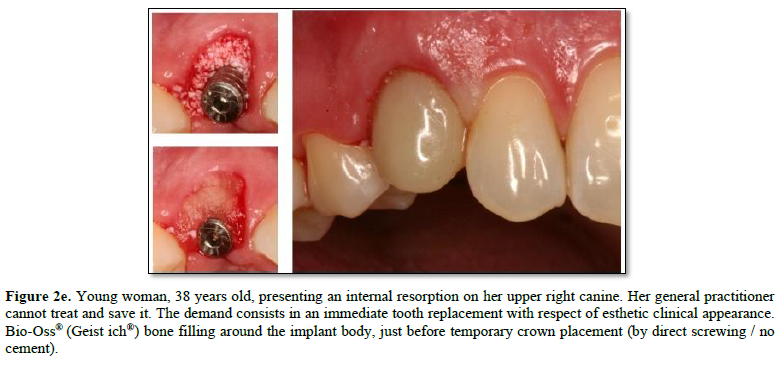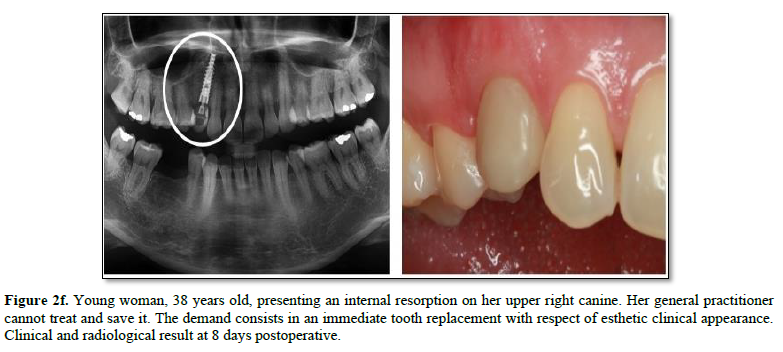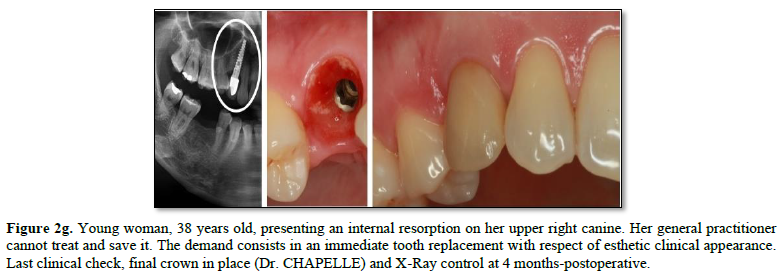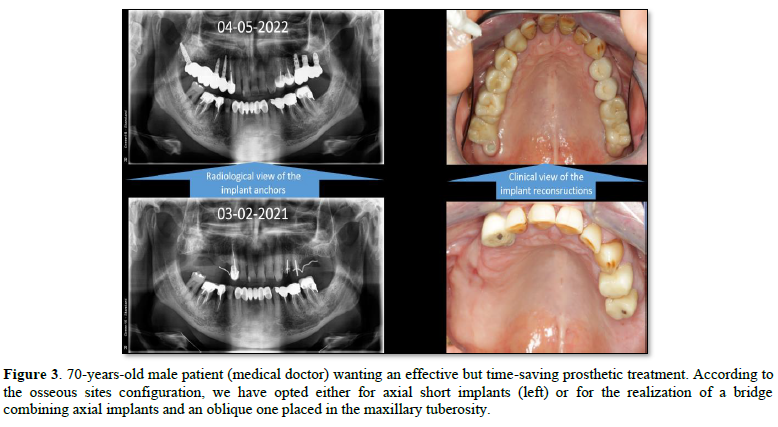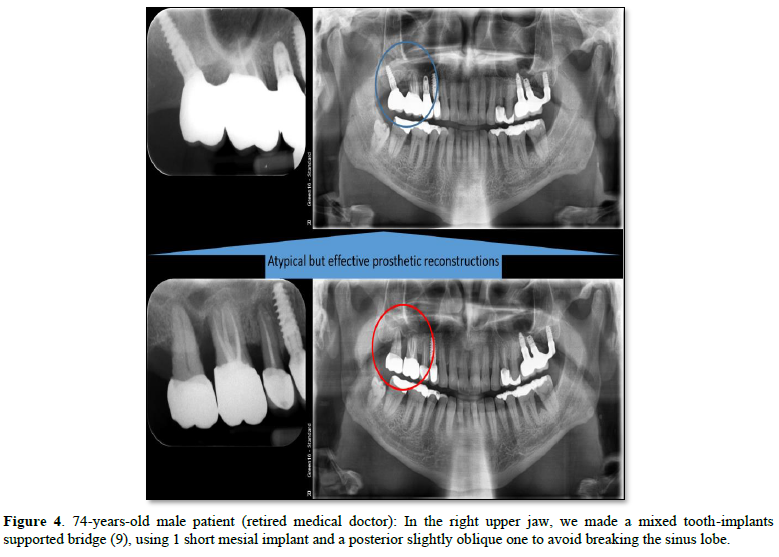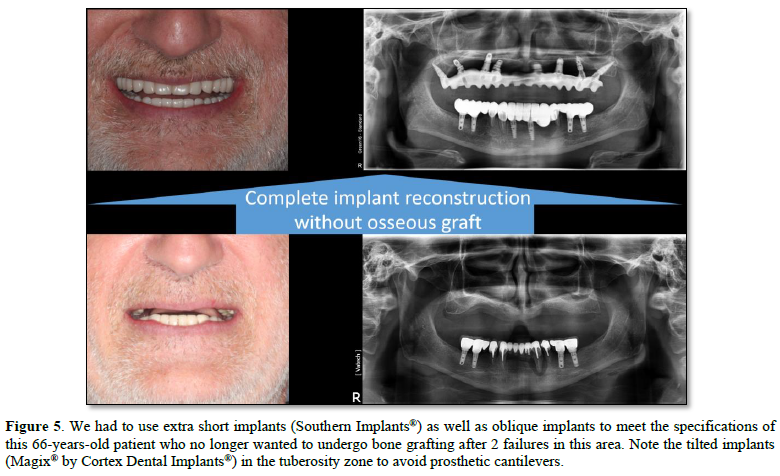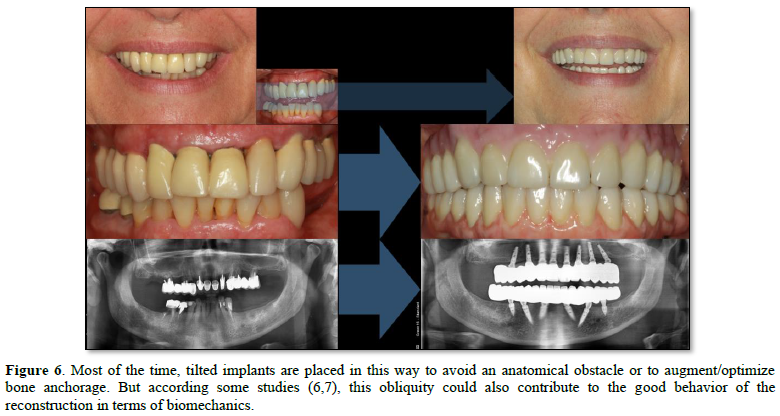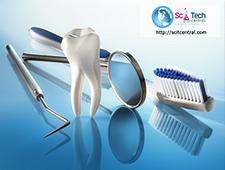Research Article
Why and When to use Tilted Dental Implants?
1055
Views & Citations55
Likes & Shares
Nowadays, prosthetic treatment plans often involve the use of dental implants, which are placed according to the results of the analysis of the concerned zone. For practical, aesthetic and functional reasons, practitioners generally insert these implants along axis closed to that of natural teeth to be replaced. However, in many clinical situations, it may be appropriate to perform implant anchorage along an oblique axis.
Keywords: Tilted implant, Oblique implant, Inclined implant
INTRODUCTION
Analysis of 3d radiological imaging often leads practitioners to consider implant placement along an oblique axis:
- To avoid breaching an anatomical obstacle (maxillary sinus, inferior alveolar nerve, adjacent natural dental roots)
- To find a favorable osseous anchorage, especially in the case of immediate implant placement after tooth extraction
- To allow the placement of longer implants with increased bone-to-implant contact
- To eliminate the use of prosthetic cantilevers.
The question then arises as to whether it is more judicious to use these inclined implants or rather to modify the anatomical site and/or the therapeutic timing in order to promote the placement of the implant in an axis that is a priori more favorable. Contrary to general belief, the scientific literature teaches us that these tilted implants have a functional behavior that is just as appreciable as implants placed more or less along the main axis of occlusal forces. A meta-analysis of this literature reveals the absence of significant differences, both in terms of survival rate, marginal bone loss and infections as well [1]. Results are just as favorable for single-tooth implants [2] as for multi-tooth restorations [3,4], including constructions with a 3-years (or more) follow-up [5].
Last but not least, let’s mention that some in silico studies have indicated that tilted implants might react more favorably compared to straight implants from a biomechanical point of view [6,7].
Studies therefore report clinical success rates as good as those of axial implants, including in long-term follow-up of immediate implant procedures [8].
As with short implants and fixed tooth-implant-supported constructions [9], which are generally classified as 2nd-line indications, the use of inclined implants is often justified as a therapeutic compromise [10]. This does not mean that the treatment has poor chances of success, but that it is favorably initiated after weighing up the pros and cons of the treatment alternatives available in the given overall clinical situation (Figures 1-6).
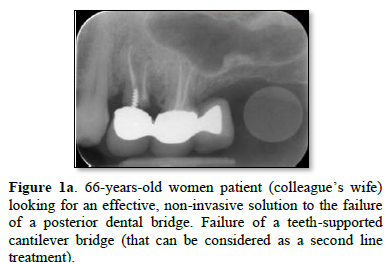
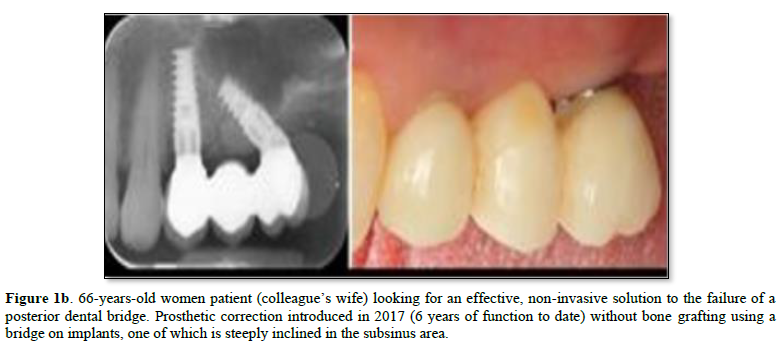
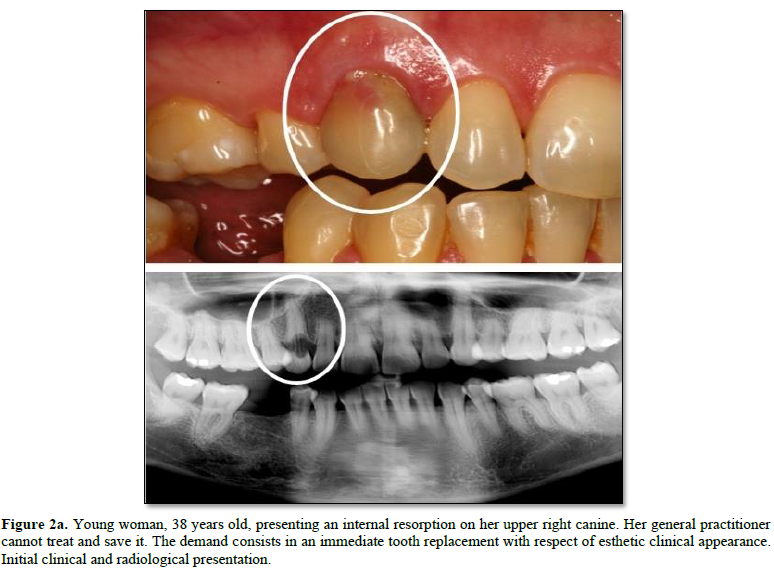
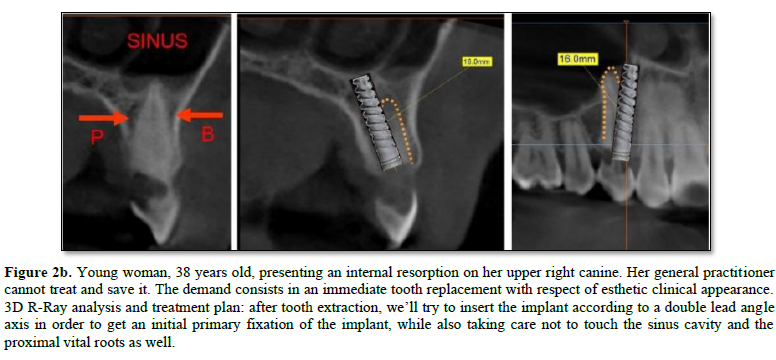
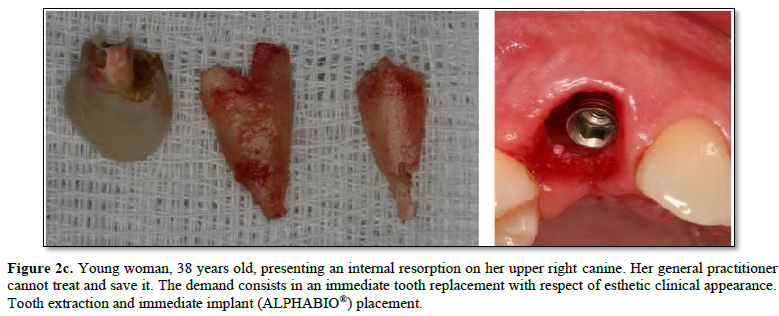
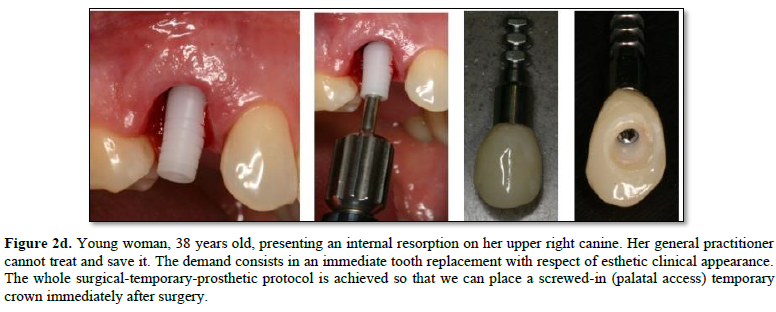
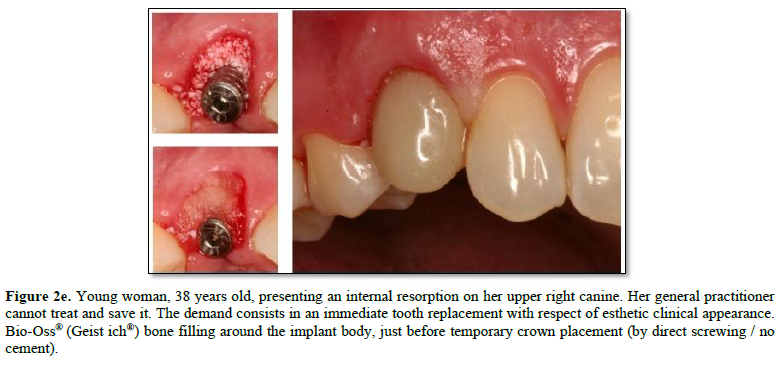
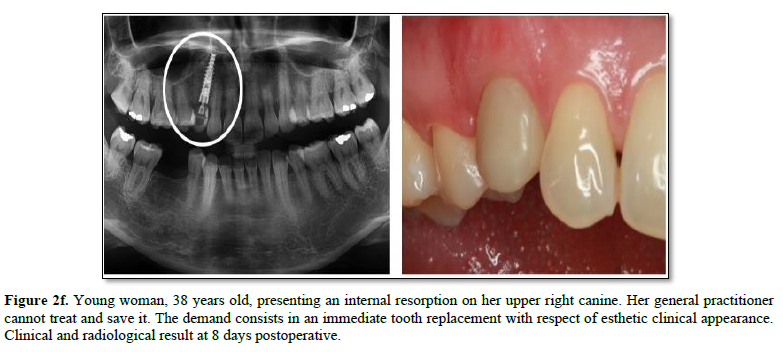
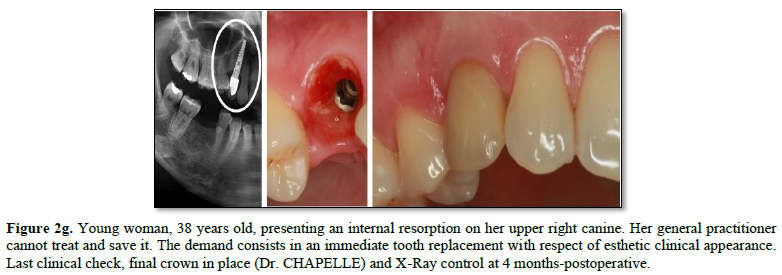
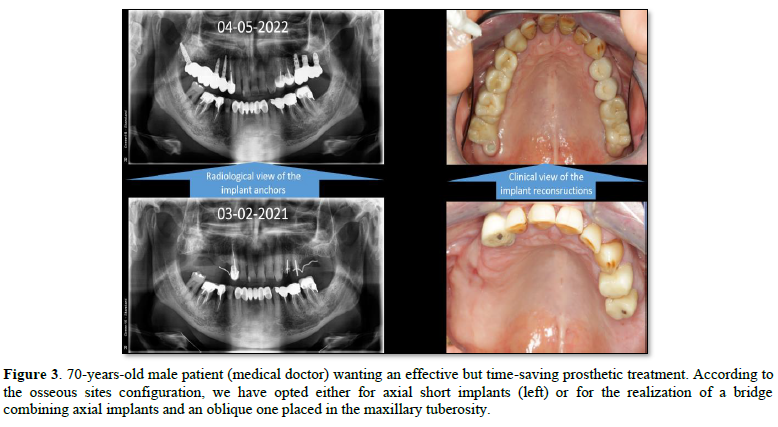
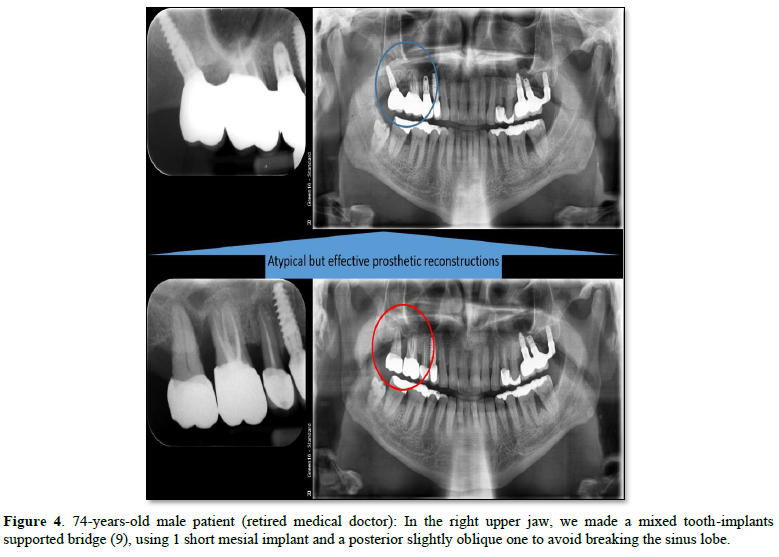
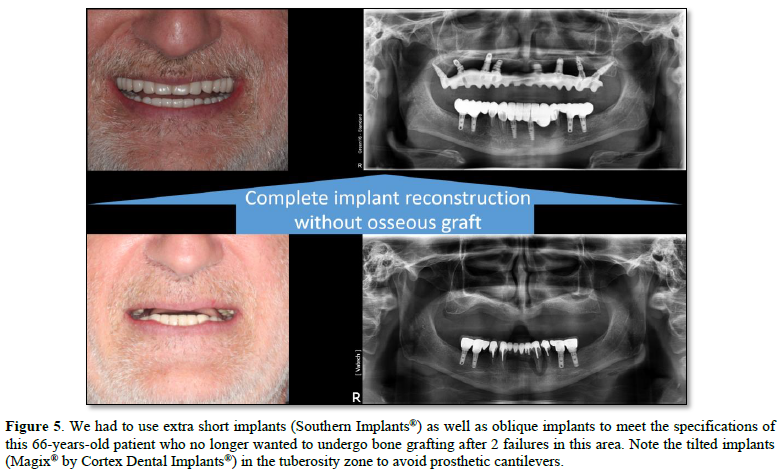
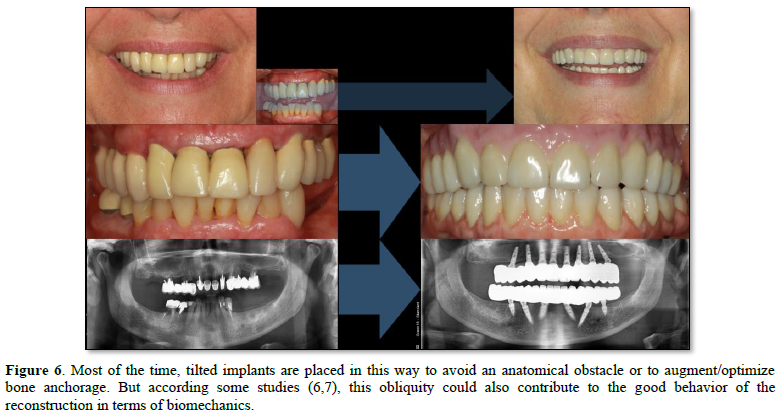
Implants can be tilted in both bucco-lingual and mesio-distal directions, or a combination of both (Figure 2). In addition to the purely surgical aspect, which must be managed in the light of a 3D radiological study, the practitioner must also include in his treatment plan the appropriate prosthetic modalities to ensure that the inclination of the implant(s) does not hinder the successful realization of the prosthesis, particularly in terms of aesthetics and possible removability [11].
The various examples in this article illustrate the clinical choices made with inclined implants. In each case, this procedural choice is based on either the patient's preference with regard to therapeutic alternatives, or the practitioner's preference, based on his or her knowledge and experience.
CONCLUSION
Tilted implants can be considered as part as Evidence-Based Dentistry since, not only they are useful and widely used in various clinical settings, but all studies to date show no significant difference between oblique and axial implants in terms of efficacy, complications or survival rates.
- Chrcanovic BR, Albrektsson T, Wennerbg A (2015) Tilted versus axially placed dental implants: A meta-analysis. J Dent 43(2): 149-170.
- Ziatev S, Iranova V, Chenchev I, Todorov R (2020) Crestal Bone Loss around Tilted or Axial Implants with Single Unit restorations. J Dent Med Sci 19(9): 6-9.
- Lin W-S, Eckert SE (2018) Clinical performance of intentionally tilted implants versus axially positioned implants: A systematic review. Clin Oral Implants Res 29: 78-105.
- Mehta SP, Sutariya PV, Pathan MR, Upadhyay HH, Patel SR, et al. (2021) Clinical success between tilted and axial implants in edentulous maxilla. A systematic review and meta-analysis. J Indian Prosthodont Soc 21(3): 217-228.
- Alccayhuaman KAA, Soto-Peñaloza D, Nakajima Y, Papageorgiou SN, Botticelli D, et al. (2018) Biological and technical complications of tilted implants in comparison with straight implants supporting fixed dental prostheses: A systematic review and meta-analysis. Clin Oral Implants Res 29: 7-10.
- Bellini CM, Romeo D, Galbusera F, Taschieri S, Raimondi MT, et al. (2009) Comparison of tilted versus non-tilted implant-supported prosthetic designs for the restoration of the edentulous mandible: A biomechanical study. Int J Oral Maxillofac Implants 24: 511-517.
- Bellini CM, Romeo D, Galbusera F, Agliardi E, Pietrabissa R, et al. (2009) A finite element analysis of tilted versus non-tilted implant configurations in the edentulous maxilla. Int J Prosthodont 22: 155-157.
- Enrico LA, Alessandro P, Davide R, Massimo DF (2023) Clinical outcomes of full-arch immediate fixed prostheses supported by two axial and two tilted implants: A retrospective cohort study with 12-15 years of follow-up. Clin Oral Implant Res 34(4): 351-1366.
- Michel Abbou (2016) Short implants and tooth-implant connections-To use or not to use?
- Michel Abbou (2021) Dentisterie orthodoxe versus compromis thérapeutiques Paroles d’experts, Dentalespace.
- Michel Abbou (2018) Axe implantaire et axe prothétique: nécessité et moyens de conjugaison Paroles d’experts.
QUICK LINKS
- SUBMIT MANUSCRIPT
- RECOMMEND THE JOURNAL
-
SUBSCRIBE FOR ALERTS
RELATED JOURNALS
- Advance Research on Endocrinology and Metabolism (ISSN: 2689-8209)
- Journal of Pathology and Toxicology Research
- Archive of Obstetrics Gynecology and Reproductive Medicine (ISSN:2640-2297)
- Journal of Psychiatry and Psychology Research (ISSN:2640-6136)
- Advance Research on Alzheimers and Parkinsons Disease
- Journal of Blood Transfusions and Diseases (ISSN:2641-4023)
- International Journal of Diabetes (ISSN: 2644-3031)

